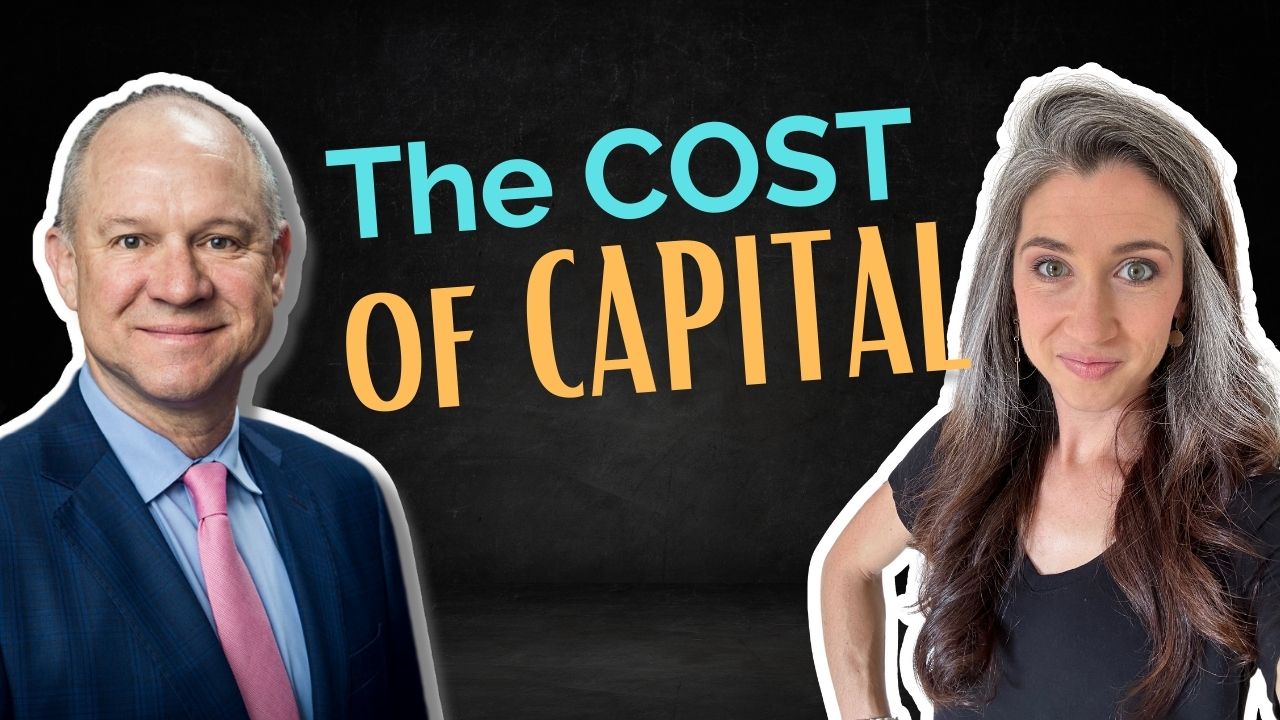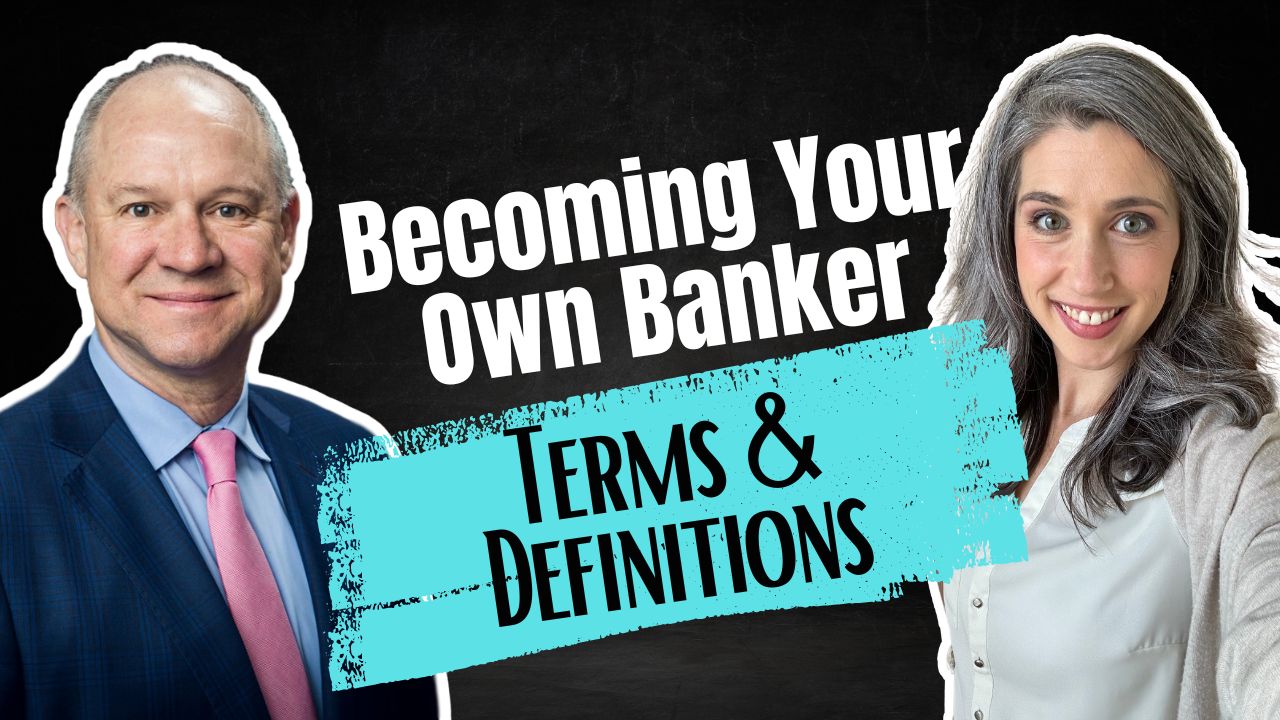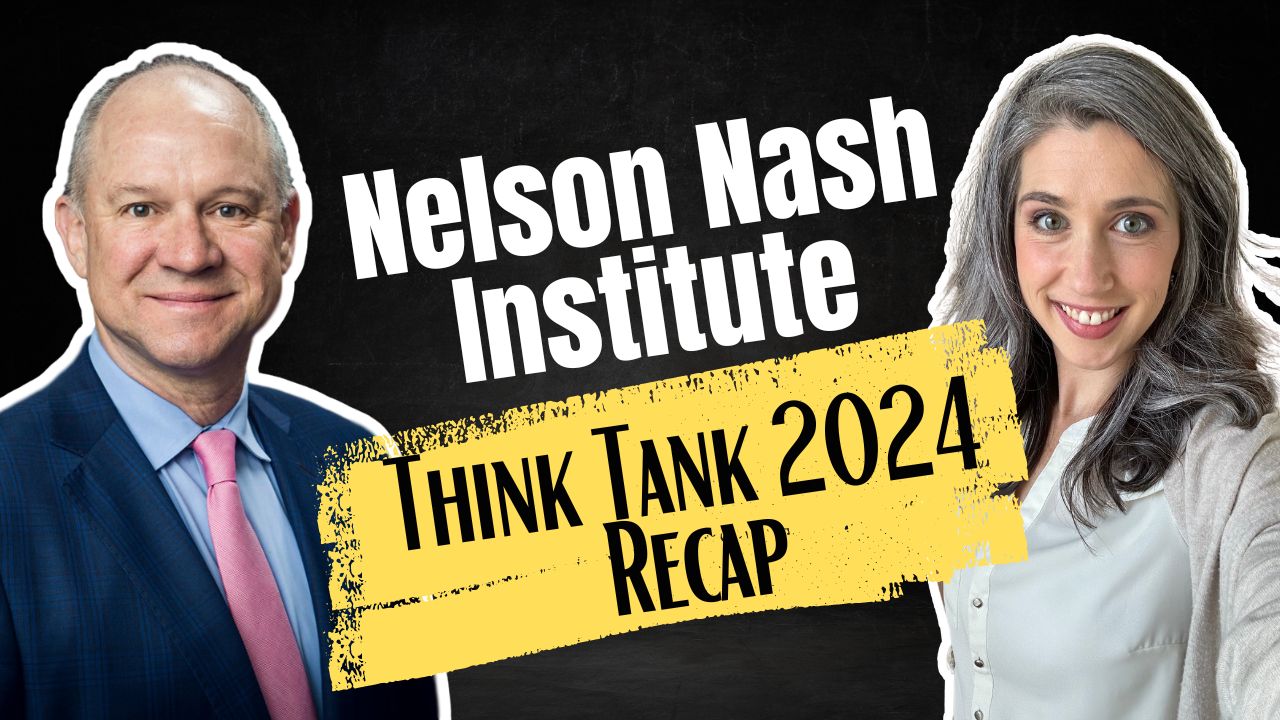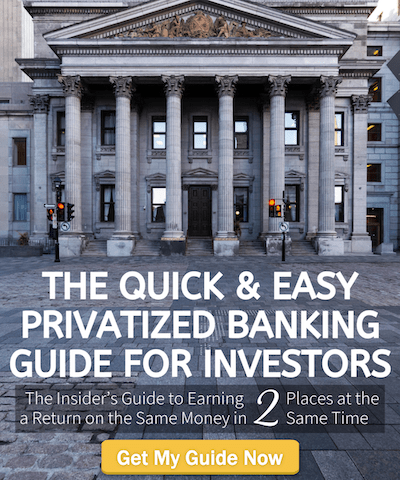
Becoming Your Own Banker, Part 5: The Cost of Capital
In this fifth installment of the “Becoming Your Own Banker” series, uncover the hidden cost of capital that can make or break your financial future. Find out the benefits of having control over your debt. Get insider information on the cost of capital and become your own banker.
Podcast: Play in new window | Download (Duration: 1:00:49 — 69.6MB)
Subscribe: Apple Podcasts | Spotify | Android | Pandora | RSS | More
Table of Contents
The Cost of Capital: You’re Always Paying Interest
Whether you realize it or not, there’s always an interest cost. As Nelson Nash says, you either pay it, or you pass it up. What this means is that any time you spend money, even if you’re not financing it at a cost, you’re losing the ability to earn interest on it, too. So, at the end of the day, there is always a cost of capital to your financial decisions.
Another way of thinking about this is opportunity cost: What is the cost of making one decision over another? And this has a bigger impact on your life than you think.
The Infinite Banking Concept can help with this because it reduces the cost of capital. When you leverage your policy with a policy loan, you can finance something while still earning compounding interest on the full capacity of your Cash Value. This is a powerful shift that allows you to optimize your financial decisions.
Infinite Banking is Like a Business
[08:35] “I think we mentioned this before; Infinite Banking isn’t something you just try… It does work the way you think it works if you think about it as building your own business. You don’t just open your doors the very first day and all of a sudden people just come into your business and you’re profitable right away. You have all this cost of startup. It’s the same way with the Infinite Banking Concept.”
If you want to start an IBC policy, you’ve got to give it a fair shot. It takes some time to build up your cash value and hit that “break-even” point. Part of the reason your policy isn’t immediately “profitable” is because the insurance company front-loads the policy costs in the first decade or so. They’re taking a risk on insuring you, and if you die tomorrow, they have to pay whatever they agreed to without receiving a single additional cent. To mitigate some of this risk, the ratio of premium that goes to policy costs vs. equity is skewed. As that risk falls off, those costs become less and less.
Build a Sustainable Policy
Does this mean that IBC isn’t good? Of course not. It should actually comfort you, as a partial owner, that the insurance companies are running their business sustainably. You want your insurance company to be successful so that your policy can be successful. And that takes time.
Life insurance is a contract. When you agree to pay premiums, the insurance company agrees to take care of everything else. If it’s in the contract, you can count on it. And on top of that, your contract cannot change. If there’s anything you can trust, it’s your life insurance contract. More importantly, you are the owner of the contract, not the insurance company. This positions you as the most important player.
No two cars perform the same, even if every single thing about them is the same. We can also say this about whole life insurance—even if all variables at the start of the policy are the same as another, the choices you make will change it. All you can do is be a good steward of your policy–-make interest payments on loans (or greater), maximize your PUAs whenever possible, and stay in good standing with your premiums. These decisions will optimize your “mileage” on your policy.
Where Do Policy Costs Go?
We touched on some of the internal costs of life insurance, so let’s dive a bit deeper. What are the costs that you’re paying, and where does it go? Just like your IBC policy is like a business, the life insurance company is actually a business. This means that they have employees to pay and overhead costs to cover. Some of the policy costs are strictly for this.
Some costs also contribute to death claims. Insurance companies use premiums to contribute to and replenish their reserves for death claims. They’re able to come up with a cost based on actuarial math that works on a 120-year lifespan for the 10 million or more lives they insure. The math is based on life expectancy data, compared to your current health and habits. It’s incredibly complex and often proprietary, but highly accurate. The actuaries can then determine how they should charge you personally to make sure their business model continues to be profitable long-term. And remember, this benefits ALL policyholders.
The Cost of Capital and Company Responsibility
The company also has a responsibility to the policyholders to be profitable. They’ve got to employ some of their funds to produce any and all promised benefits. There’s a dollar amount of guaranteed interest they must pay to policyholders each year, but they also want to be profitable in general.
This doesn’t mean they’re investing all over the place, though. Part of the insurance company’s responsibility is to invest conservatively. They can’t be in the business of losing money, so they invest in bonds and mortgages, amongst other conservative investments. This is a major reason why dividends, although not guaranteed, are often paid to policyholders each year.
[23:49] “I’ve said this dozens of times on the show. There’s not that much difference between each mutual company that has good financial ratings. There just isn’t. You’re not going to get a lot better performance out of one company than another… 75 to 85 percent of every company’s portfolio is simply going to contain government and corporate bonds.”
The Cost of Policy Loans
While policy loans allow you to mitigate some of the cost of capital, you must still pay interest to your life insurance company. There are a few misunderstandings about the interest you pay on a policy loan. The first is that because you pay interest, you’re negating any growth you have in your cash value. This isn’t necessarily true because of the compounding effect of your policy growth.
The more volume you have in your policy, the more impact the interest and dividends have on your cash value growth. Your policy just gets better and better over time, for the cost of using a policy loan. Remember: you’ll never escape the cost of capital, however, some strategies are more efficient than others. Another advantage is that when you pay interest to your life insurance company, you’re contributing to the company’s profits, which eventually come back to you in dividends. Would you rather bolster your insurance company or the banks?
This, however, leads to the second misconception about policy loans. Many people mistakenly believe that when you pay interest, you’re paying it to yourself. This comes from inconsistent and inaccurate language about policy loans. When you take a loan, you’re borrowing money from the insurance company. That means that you have to make payments to the insurance company. And while there are many reasons this is to your advantage, this means paying yourself interest is not one of them. You simply get to benefit later from any profits, and the interest you pay might contribute to those profits.
Book A Strategy Call
Do you want to coordinate your finances so that everything works together to improve your life today, accelerate time and money freedom, and leave the greatest legacy? We can help! Book an Introductory Call with our team today https://themoneyadvantage.com/calendar/, and find out how Privatized Banking, alternative investments, or cash flow strategies can help you accomplish your goals better and faster. That being said, if you want to find out more about how Privatized Banking gives you the most safety, liquidity, and growth… plus boosts your investment returns, and guarantees a legacy, go to https://privatizedbankingsecrets.com/freeguide to learn more.
Becoming Your Own Banker, Part 28: Infinite Banking Definitions
Have you ever felt like you’re on a financial hamster wheel, constantly spinning but never gaining traction? Join us as we unpack the epilogue and glossary of Nelson Nash’s “Becoming Your Own Banker.” It’s a journey through the intricate philosophy of IBC, as we cover Infinite Banking definitions that shows how effective money management can…
Read MoreNelson Nash’s Legacy: Think Tank 2024 Recap
Embark on a transformative financial odyssey with us as we reflect on our profound experiences at the Nelson Nash Think Tank for 2024. Unlock the doors to personal economic empowerment with the Infinite Banking Concept (IBC), a brainchild of the late Nelson Nash that revolutionizes the use of dividend-paying whole life insurance. We shed light…
Read More


